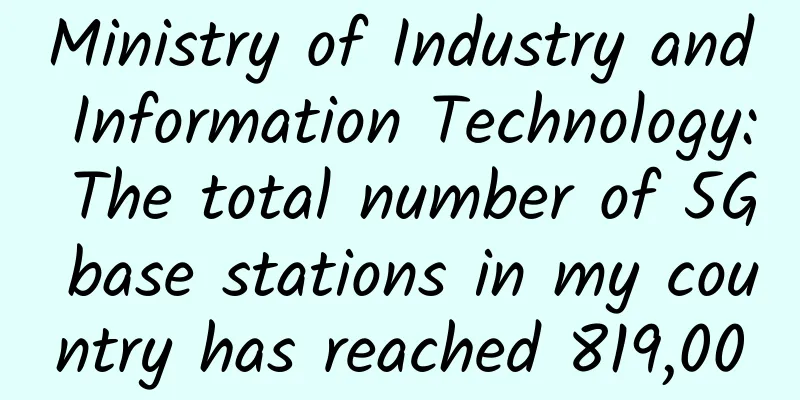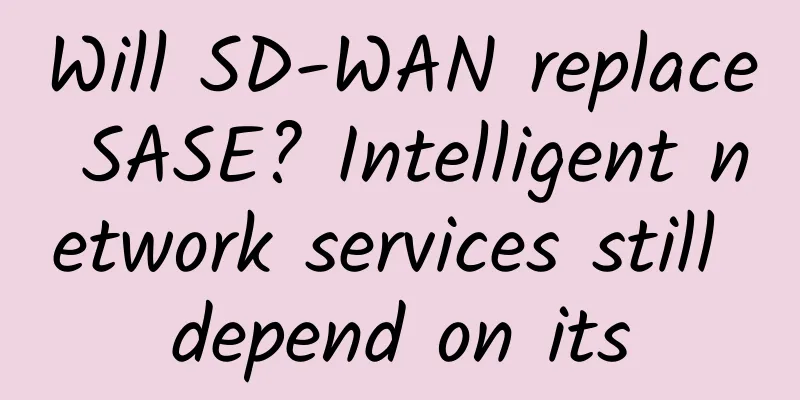6G is getting further and further away from us

|
Many years later, facing the tsunami-like surging speed of 5G, I will always clearly remember the afternoon when I first experienced 3G: more than 300 megabytes of traffic were used up in just a few hours, which exceeded the one-month package. Before that, I couldn’t even use up my 30M monthly data. Indeed, in the 2G era, the only thing you could see on the Internet was pure text. If there were blurry pictures, the title would have to include the word “picture” to tease people. With 3G, high-definition pictures are so addictive, just like watching videos nowadays. This exhilarating feeling made me excited and terrified at the same time. 4G is the beginning of the freedom of data traffic for Chinese people. Since then, whether on the subway, train or plane, you can always hear noisy and rude laughter bursting out from various mobile phones. However, the situation of 5G is quite different. I still remember that at the beginning of 5G, there was a very popular question on Zhihu: "What can 5G be used for?" A few years later, another question stood out: "Why is 5G suddenly not popular?" I believe everyone can relate to these two issues. Even I have quite a few colleagues who are studying 5G technology and talking about the bright future of 5G applications, while using 4G phones that do not support 5G, clearly separating work from life. Why is 4G widely praised, while 5G is widely questioned? Where will 6G go? Diminishing marginal benefitsVideo is the highest form of multimedia content on mobile phones. At a time when DOU is approaching 18GB, most people have achieved data freedom, and can watch videos whenever they want and for as long as they want, without worrying about excess charges caused by exceeding the data limit. Due to the lack of killer applications, the main benefit of 5G for ordinary users is currently just to reduce the cost of traffic. For the most mainstream video applications, the perceived experience is not obvious. When looking forward to the vision of 5G, VR was once highly anticipated as an imagined killer application. But if you think about it carefully, it is impossible for everyone to wear a VR helmet when going to work, eating, and shopping. This highly immersive application has extremely low requirements for mobility. Why do we have to use 5G if we have Wi-Fi at home? 5G may indeed outperform Wi-Fi in some commercial scenarios such as multi-user large-space collaborative games, but niche demand is unlikely to become a mass killer. In addition, professional VR equipment is currently expensive, and low-cost equipment has a poor experience, so there is still a long way to go before the product can be popularized. What about VR's sister AR? It can indeed be used as a wearable device for a long time, and various virtual and real auxiliary information can be loaded on AR glasses. The prospect is still very imaginative. However, it is also facing the problems of high cost and immature ecology. It is likely to develop in the professional field first and then extend to the consumer level. In addition, there is the naked-eye 3D technology that has emerged in recent years. Although the current experience is good, the screen viewing angle is limited and it is difficult to support multiple people to watch. The current high-quality 3D video sources are also limited. If you only convert 2D videos into 3D, the effect is better than nothing. In addition, are the cloud phones that operators have been pushing recently likely to become killers? With good network coverage and sufficient capacity, 5G can provide a better experience for cloud phones. However, the biggest feature of mobile networks is uncertainty. No one wants their phone to become a brick that can do nothing because of a network outage at a critical moment. Well, let me summarize. Currently, for ordinary users, the experience of video applications is already quite good as the upper limit of speed and experimental requirements. The improvement in user experience brought about by the increased network speed of 5G is limited, and as the marginal benefits decrease, it will be even less noticeable. With no room for new user growth and new businesses developing slowly, the 5G ToC market is bound to become ordinary. But this is understandable, just like the development and popularization of electricity, which has retreated from the spotlight and become as necessary as air. The tired Shannon formulaWhen talking about the capacity of wireless communication systems, the industry always mentions Shannon's equation. However, it has been more than 70 years since the Shannon formula was proposed, but there has been no major breakthrough in the basic theory of mobile communications. picture In fact, the spectrum efficiency of 4G single-transmit single-receive (SISO) systems is basically the same as that of 3G, and has not been much improved even in the 5G stage. The reason why we can see a significant increase in network speed is almost entirely the result of increasing carrier bandwidth and spatial channels. picture From 3G to 4G, the carrier bandwidth has been increased from 5M to 20M. In 5G, the bandwidth has even been expanded to 100M or even 400M. In order to obtain large bandwidth, the frequency band has been developed all the way up, from low frequency to medium frequency and then to millimeter wave. 6G will also expand to terahertz. With a wider road, the speed will naturally increase. picture In terms of space, 3G mainly uses single-channel transmission, while 4G uses dual-channel transmission as standard and 4-channel transmission as advanced configuration. Later, it supports 8-channel transmission, and MIMO has since entered the historical stage. With more channels, the speed can be doubled. picture In 5G, 32-channel and 64-channel transmission and reception have become the mainstream, which is the so-called Massive MIMO. In 5G-A, the evolution of 5G, 128 or even 384-channel antenna transmission and reception began to appear, and the theoretical network speed was greatly improved again, which is the origin of the 10G experience. As for the low latency and large connection features of 5G, they are essentially a game of robbing Peter to pay Paul. With more resources, some can always be used for other purposes. So, what is the price of such great efforts to create miracles? First of all, the higher the frequency band, the worse the signal coverage. This results in 5G seemingly having an amazing system capacity, but in fact it is just an empty promise, and the cost of large-scale deployment is extremely high. Secondly, the combination of large bandwidth and multi-antenna reception and transmission makes the physical layer processing algorithm of the signal extremely complex, which requires increasingly powerful processing chips to support, and the cost of equipment is rising. Another fashionable term for chips nowadays is: computing power. The system's thirst for computing power has driven us into the era of computing power. Ubiquitous computing power coupled with massive amounts of user data in mobile communication systems is the foundation of artificial intelligence. Therefore, the current development direction of communication networks is: intelligence, that is, introducing artificial intelligence algorithms into the physical layer to further enhance the processing performance of the system. However, the most mainstream AI algorithm is machine learning based on artificial neural networks, which is a practical technology that knows what it does but does not know why it does it. In other words, although AI can complete tasks well after training, it is difficult to explain the principles behind it. Therefore, it is impossible to achieve underlying technological breakthroughs by relying on artificial intelligence. Semantic communication is a research direction, but it is still in a very early embryonic stage. Whether it can achieve theoretical breakthroughs and how big its application space will be are still unknown. Without Claude Shannon, the world would be dark forever. Today, after 70 years of development, mobile communications are once again in dark. We are waiting for a new disruptor to ignite the future. Shift in network capabilitiesAs wireless communication networks are difficult to break through in basic theory and individual users are becoming less and less sensitive to network speed and traffic, starting with 4G, standardization research has begun to shift, which is what we call the shift from “human connectivity” to “internet of things”. So we saw the emergence of LTE-M, NB-IoT, and Cat-1. These IoT standards do not pursue speed, but require wide coverage, large connections, low power consumption and low cost. In the 5G stage, three major scenarios, eMBB, mMTC and uRLLC, were proposed from the beginning of standard formulation. Among them, only eMBB is consumer-oriented, while mMTC and uRLLC are aimed at the Internet of Things rather than the Internet of People. In addition, 3GPP R17 also introduced RepCap. This seemingly mysterious term is actually just an abbreviation for "reduced capacity", which is intended to create a "5G version of 4G". The reason is simple, most of the Internet of Things does not require too high a rate, but is very sensitive to cost. So what technologies will be introduced in the second half of 5G, that is, 5G-A? Core technologies such as interawareness, full-duplex, non-terrestrial network, and passive Internet of Things are not for ordinary consumers. In recent years, the terms "private network" and "digital transformation" have frequently appeared along with these IoT technologies. In other words, when implementing the IoT, 5G is increasingly being used in the form of private networks to address specific production needs. For example, steel mills have their own private networks, petrochemical plants have their own private networks, automobile factories have their own private networks, coal mines have their own private networks, and ports have their own private networks. The characteristic of these private networks is "dedicated". Different scenarios have different bandwidth, latency, jitter and reliability requirements. Unlike the "best effort" service of traditional networks, private networks require absolute certainty. These are the main issues that 5G is currently busy solving. At present, my country has built more than 20,000 5G industry virtual private networks, integrated into 67 major national economic categories, and the number of application cases exceeds 94,000. The "2023 5G Factory List" recently released by the Ministry of Industry and Information Technology selected 300 established 5G factories as benchmarks, covering 24 major national economic categories. picture According to GlobalData's forecast, the global IoT market will exceed US$1 trillion in 2027, of which enterprise IoT will account for 73%. As early as 2022, the number of cellular IoT users in my country exceeded the number of mobile phone users for the first time. Although the Internet of Things and industry-specific networks are not completely equivalent, this also shows that the undercurrent that was once vague on the seabed has developed into a huge wave that engulfs everything. In China, since only operators have licensed spectrum, companies must cooperate with operators to build their own private networks. Internationally, many countries can directly allocate spectrum to companies, which means that the construction of private networks no longer requires the participation of operators. 5G has been deconstructed into a large network plus numerous industry-specific networks. Moreover, as the large network becomes increasingly silent, the industry increasingly considers the private network to be the direction of the future. However, these private networks have nothing to do with the general public. No one has the heart to pay attention to and study areas that are not related to them. The popularity of the 5G topic will surely fade away with the silence of the big network, and the small circle will not be able to stir up any waves after all. Just like electricity mentioned earlier, this is a historical inevitability. So, what about 6G? picture The picture above is the ITU's vision for 6G. It can be seen that immersive communications can be used for consumer applications such as VR and AR, ubiquitous connectivity supports integrated communications in the air, land, and sea, and can support some emergency communications, AI and communication fusion can improve the underlying efficiency, and the rest are all for specific scenarios. "Human connection" has changed from the absolute center of gravity to the edge. 6G will continue to move forward on the path 5G has taken, and move further and further away from our daily lives. Final ThoughtsGiven that 5G has entered the second half of its application implementation and value demonstration, and 6G has also entered an active research period, the topics I will consider later can be roughly divided into the following two directions. The first direction is 5G industry solutions and application results, which I call the “5G Dream Factory”. The second direction is the research dynamics of 6G, which I call the “6G Hub.” Most of the technologies of 5G-A will only be popularized in the 6G stage, so they are also included in this section. Thank you for your attention and support. |
<<: A brief analysis of the application of NAT technology in cloud gateway
>>: JD Interview: What are the differences between Cookie, Session and Token?
Recommend
The first batch of commercial 5G countries' network speeds: several blocks faster than Wi-Fi
There have been voices saying that the large-scal...
To promote user migration to 5G, these tasks need to be done in advance
[[357697]] After the issuance of 5G licenses on D...
The architecture needs to be upgraded urgently as operators lay out their future networks
The future is a world of interconnected everythin...
my country started IPv6 construction early but is still late. How will we roll up our sleeves and work hard in 2017?
As early as 2003, my country put the development ...
How can 5G fixed wireless access replace fiber optic access to the last mile?
[[180048]] Verizon, a US operator, announced that...
How to determine whether two IP addresses are in the same network segment? What is a subnet mask?
We have read many articles before about IP addres...
Inspur Cisco Networks: Open source and SDN bring new development opportunities to domestic network companies
Open source has become a trend, and almost all te...
Java Server Model - TCP Connection/Flow Optimization
Usually, our applications do not need to handle t...
CloudCone: Premium SC2 Black Friday pre-sale price starting at $32.94/year, free snapshot backup, Los Angeles data center
Last week we shared CloudCone's VPS hosting B...
RAKsmart August server flash sale starts at $30/month, VPS host starts at $1.99/month, new Hong Kong large bandwidth optional 100Gbps high-defense server
RAKsmart is a Chinese-run foreign hosting company...
Kvmla: Japan/Singapore dedicated servers as low as 280 yuan/month, Japan/Hong Kong CN2 VPS 20% off, top up 500 yuan and get 100 yuan
The old host Kvmla has sent a new promotion, with...
2017Q1 China Wireless Router Market Research Report
With the popularity of WiFi and mobile devices, w...
From 0G to 5G, the ups and downs of mobile communications over the past century
During World War II, Motorola's SCR series wa...
5G commercialization promotes the scale development of industrial Internet
The Industrial Internet is a network that connect...
RepriseHosting: Seattle server $24.95/month-L5640/16G memory/1TB hard disk/10TB monthly traffic
RepriseHosting is a long-established hosting comp...









